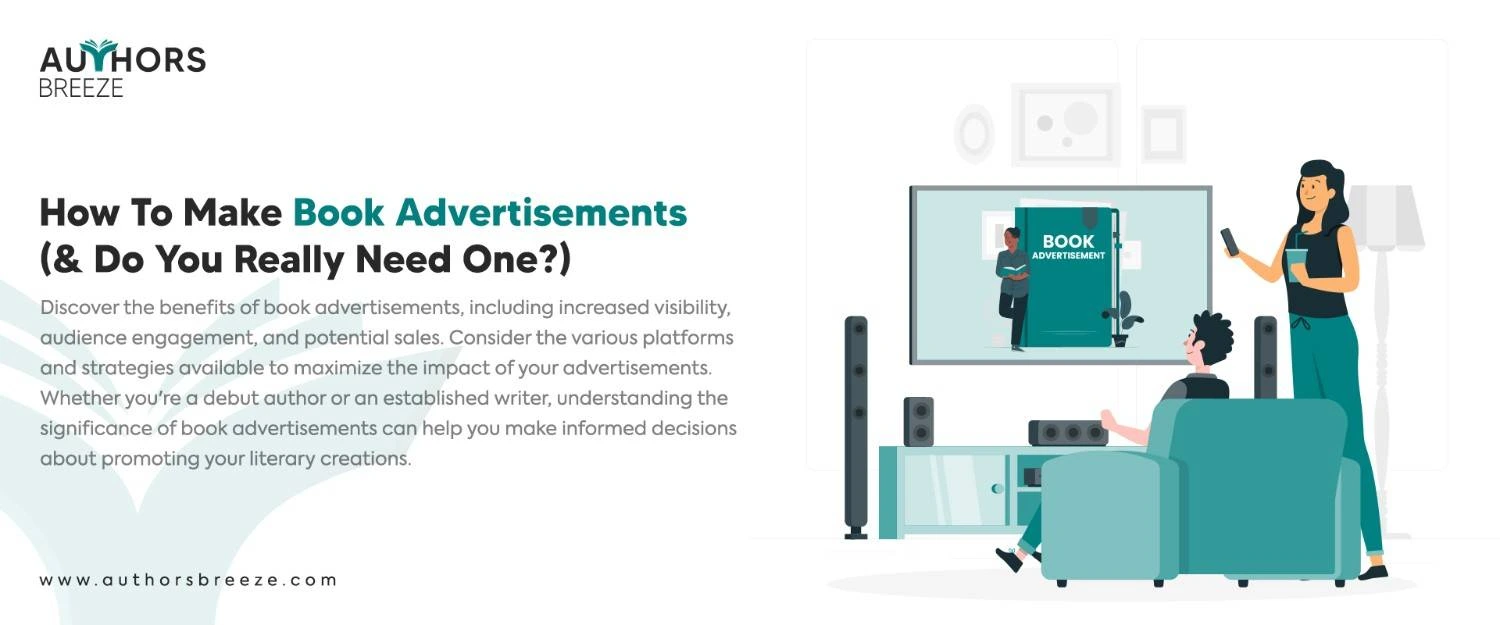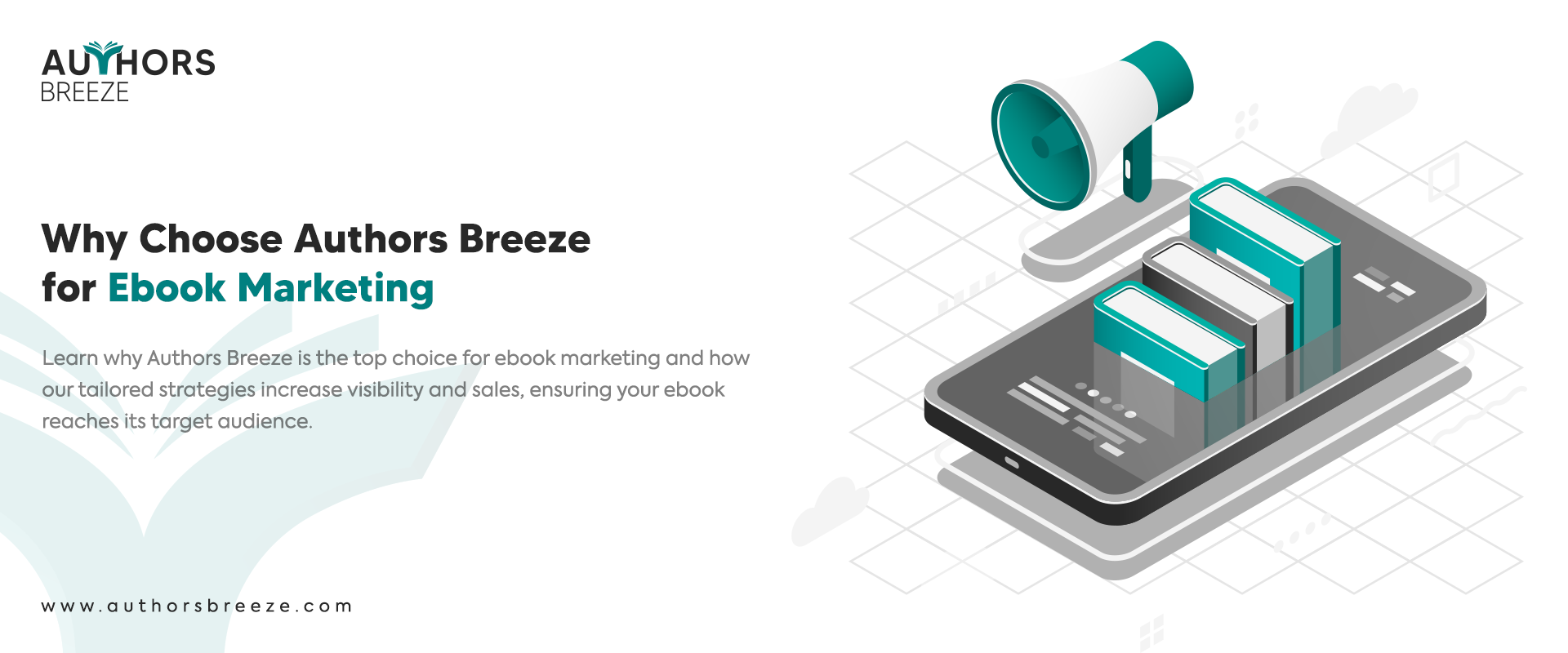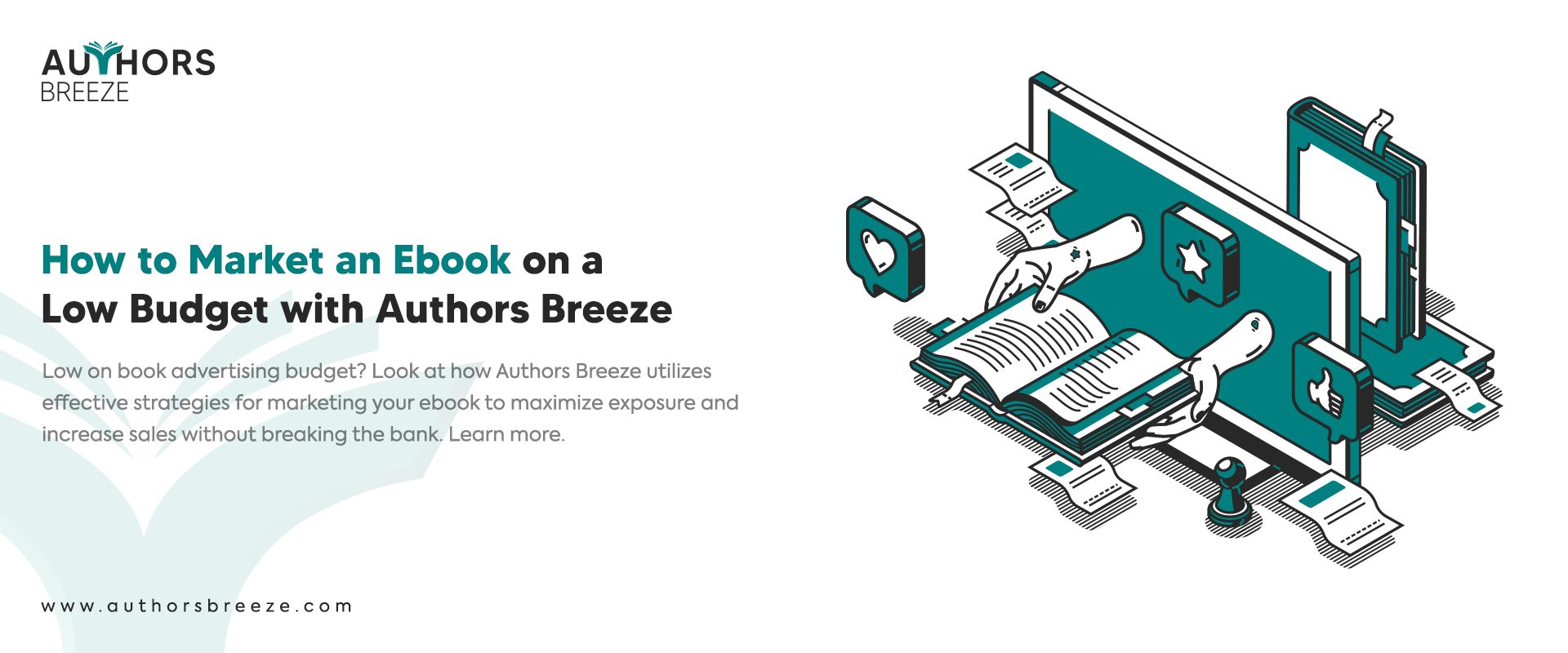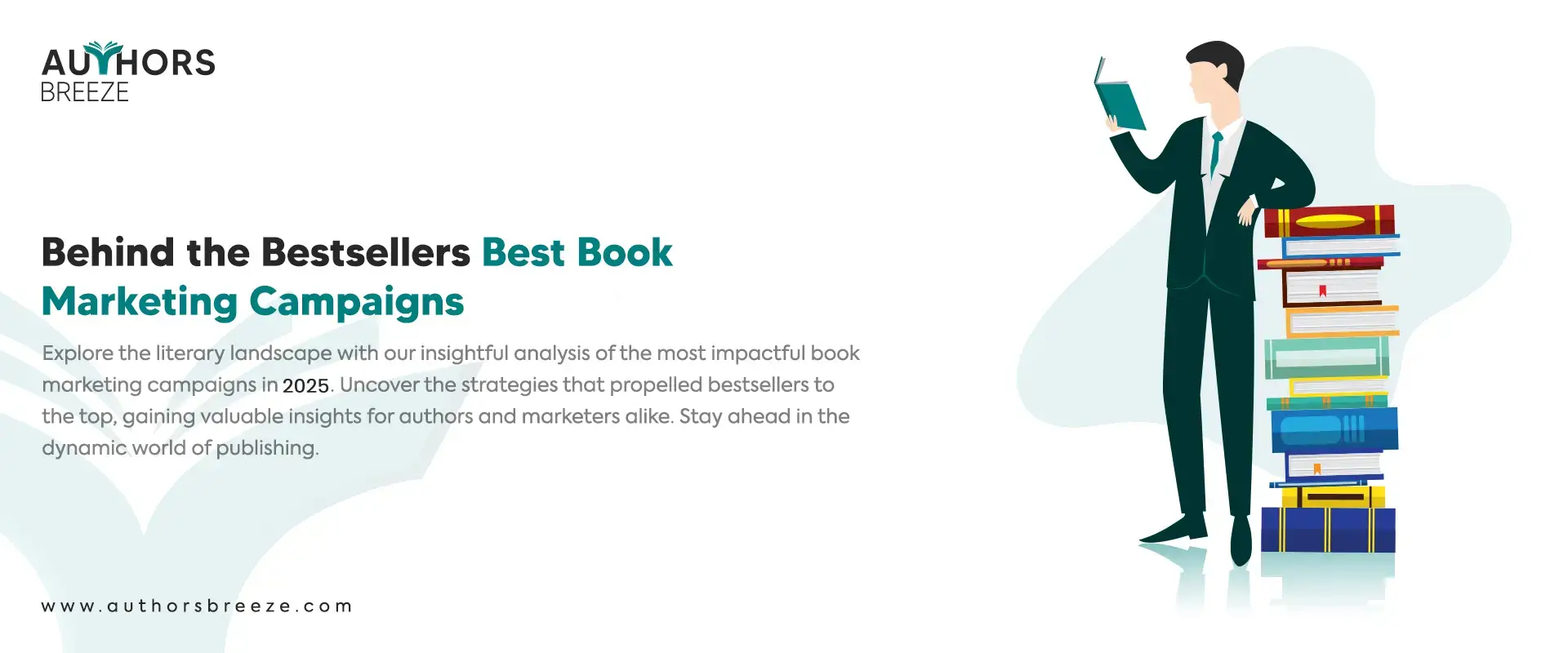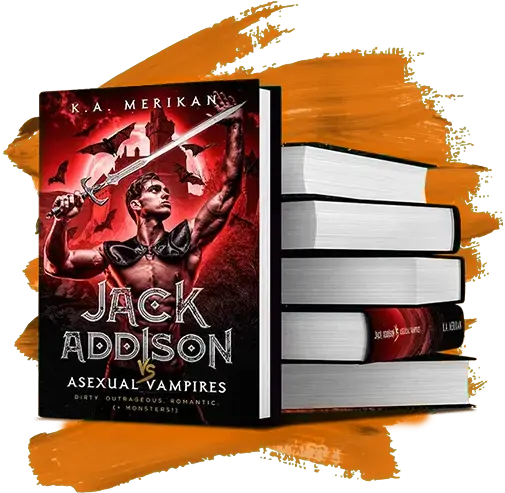Thousands of books are published every day. Book advertisements play a crucial role in increasing awareness about those books. It captures the attention of the readers and helps you generate interest. Therefore, effective book advertisements can make a big difference if you want to reach your target audience and boost the visibility of your book.
The Role of Book Advertisements
Book advertisements serve multiple purposes in the publishing industry. For example they:
Increase Book Visibility and Reach
A book advertisement help increase the visibility and reach of your book. It ensures that your book doesn’t get lost in the sea of available titles. You can capture the attention of potential readers who may not have otherwise discovered your book by strategically placing ads in relevant mediums.
Target the Right Audience
A book ad allows you to target specific audiences. By carefully selecting advertising platforms and channels, you can reach readers more likely to be interested in your genre or subject matter. This targeted approach increases the chances of converting ad viewers into book buyers.
Build Author Brand and Credibility
Book advertisements contribute to building your author’s brand and establishing credibility. Consistent exposure to your book through ads creates brand recognition. It makes readers more likely to remember your name and seek out your work in the future. Positive reviews and endorsements displayed in ads also help build trust with potential readers. As a result, it encourages them to give your book a chance.
Types of Book Advertisements
Book advertisements can be broadly categorized into two types:
1- Traditional
Traditional advertising methods include print media, such as newspapers and magazines. You can place book advertisements there to capture the attention of print readers. Radio and TV ads are another avenue for reaching a broader audience. It allows you to convey the message of your book through audio and visual means. In addition, billboards and posters in strategic locations can generate local interest in your book.
2- Digital
Digital methods have gained popularity in recent years. Social media platforms like Facebook, Instagram, and Twitter enable you to target specific demographics and interests. It makes an effective way to reach potential readers. Online book promotions, such as discounted e-books or limited-time offers, can attract attention and encourage immediate purchases. You can also collaborate with book review websites and blogs. They can help promote your book to avid readers who rely on trusted recommendations.
If you utilize both traditional and digital methods, you can maximize the reach and impact of your book promotions.
How to Make Effective Book Advertisements?
If you want to convey your ideas to the world, it is the perfect time to begin your journey as an author. The icing on the cake is that you do not need book publishers to publish your book. You can now self-publish your book. However, publishing a book is just the first step. You need to promote it well to create awareness about it and sell it successfully. But how can you market it? It is where you need effective book advertisements.
Let’s brief you on how to create ads that work for you. Ads that can effectively target your audience and encourages them to buy your book.
Step 1: Write a Book
The first step, to begin with, is to write an excellent book. There is no way advertising can save a book that is poorly written. Therefore, you should write a book that can make an impact and attract readers.
If you want to craft a compelling book, the following are crucial elements to consider:
Objectives
Clearly define the outcomes that will deem your book a success. What specific results are you aiming for?
Target audience
Understand who you are trying to reach and the problems they seek solutions for. Identify their needs, desires, and challenges.
Message
Articulate what your book is about and why it will resonate with your audience. Clearly communicate the value and relevance of your content.
In addition, bear in mind the following points:
Memorable titles
Successful books possess captivating titles. Therefore, your book title should be:
- Informative
- Easy to pronounce
- And attention-grabbing
It should linger in people’s minds, even if they don’t quickly click on your ad.
Prioritize reading
Most book ads focus on making a solid first impression. However, the goal should be to compel people to read your book. Ensure you present your book professionally. Therefore, pay attention to editing, book format, and publishing standards.
Reader experience
It’s vital to create a pleasant reading experience for your audience. A book that is structured properly and free from errors engages the reader and makes them enjoy it.
If you publish your book in digital form, we suggest you go for eBook writing services. They can help you write a flawless book. In addition, if your book is perfect, you can effectively promote it via ads.
Step 2: Identify the Target Audience
To design effective book ads, identify your target readership. Determine the specific group of people who are most likely to be interested in your book. Consider factors such as age, gender, geographic location, and any specific demographic that aligns with your book’s genre and theme.
Analyze Their Preferences and Interests
Once you know your target audience, delve deeper into their preferences and interests. Learn:
- What genres do they enjoy?
- What themes resonate with them?
- The types of books they typically gravitate towards.
Consider their reading habits, favorite authors, and any specific aspects that capture their attention and engage them.
Conduct Market Research
Market research plays a vital role if you want to design a successful book ad. Explore the book market to gather insights and trends. Look for similar books in your genre that have performed well and examine the advertising strategies employed. Utilize online platforms, social media, and reader communities to gather feedback and opinions. You can tailor your ads to meet the expectations and desires of your target audience if you understand the market landscape.
Step 3: Define Clear Objectives
Clearly define the goals you want to achieve with your book ad. Are you aiming to increase book sales, generate buzz and awareness, promote a new release, or expand your reader base? When you identify the primary goal, you can focus your efforts and create a targeted ad that aligns with your objectives.
Set Specific and Measurable Objectives
It’s essential to set specific and measurable goals to track the success of your book ad. For example, instead of a general purpose like “increase sales,” you could set a specific objective such as “achieve a 20% increase in book sales within the first month of the ad campaign.” It allows you to measure the success of your ad and make data-driven decisions.
Align Objectives with the Book’s Genre and Target Audience
Ensure that your goals align with both the genre of your book and the preferences of your target audience. Different genres may require different approaches. For example, suppose you’re advertising a suspense thriller. In that case, your objective might be to create a sense of intrigue and suspense in the ad. Likewise, consider the expectations and preferences of your target audience when setting goals. If your book targets young adults, your objective might be to create a visually appealing and relatable ad that resonates with their interests.
Step 4: Craft a Compelling Message
Identify and highlight the unique qualities and benefits of your book that set it apart from others in the market.
- What makes your book unique?
- Is it a fresh perspective, a unique plot twist, or an innovative concept?
Define your USP and integrate it into your ad to grab the attention of your target audience.
Create a Captivating Headline and Tagline
Your headline and tagline should be attention-grabbing and intriguing. Use clear language, evoke curiosity, or convey powerful emotion. Craft a concise and memorable message that entices readers to learn more about your book. Consider the genre and tone of your book to ensure the headline and tagline resonate with your target audience.
Craft Persuasive and Concise Copy
Write persuasive and concise copy that conveys the essence of your book and its appeal. Focus on the key selling points, such as compelling characters, a thrilling plot, or thought-provoking themes. Use persuasive language, highlight reader benefits, and create a sense of urgency or excitement. Keep the copy concise to maintain the attention of the readers and make every word count.
Utilize Storytelling Techniques
Storytelling can be a powerful tool in book advertising. Instead of simply listing features, engage your audience with a captivating story within the limited space of your ad. Create intrigue, evoke emotions, or pose questions that make readers curious about the story. Use storytelling methods such as vivid imagery, relatable characters, and a compelling narrative arc to leave a lasting impression.
Step 5: Design Eye-Catching Visuals
Visuals are powerful tools for book ads. They can instantly grab attention and convey the essence of your book. You can also
Choose an Appropriate Color Scheme
Select a color scheme that aligns with your book’s genre, theme, and target audience. Different colors evoke different emotions and have psychological effects. Consider using colors that reflect the mood or atmosphere of your book. For example, vibrant and bold colors may work well for a fantasy novel. In contrast, muted and subtle tones may be more suitable for a literary drama.
Select High-Quality Images or Illustrations
Choose visually appealing and high-quality images or illustrations that complement the content of your book. Ensure that the visuals align with the genre, tone, and themes of your book. Whether it’s a striking photograph or a beautifully illustrated scene, the visual element should capture the essence of your book and intrigue potential readers.
Incorporate Typography That Matches the Book’s Theme
Pay attention to typography to create visual harmony. Select fonts that align with the theme of your book, genre, and target audience. For example, elegant and sophisticated fonts may suit a historical romance novel. On the other hand, bold and modern fonts may work well for a sci-fi thriller. Ensure that the typography is legible, even at different sizes. Moreover, avoid using too many different fonts to maintain a cohesive and professional look.
Ensure Readability and Legibility
Make sure that the text in your ad is easy to read and understand. Use contrasting colors between the background and text to ensure legibility. Avoid overcrowding the design with excessive text or cluttered visuals. Maintain spacing between elements for visual clarity. Test the readability of your ad by previewing it in different sizes and formats to ensure it remains clear and appealing
Step 6: Select the Right Advertising Channels
After you successfully create your ad, it’s time to pick the advertising channel where your ad will reach the target audience.
Consider Traditional Print Media Options
Traditional print media can still be effective for reaching specific target audiences. Explore options such as newspapers, magazines, and local publications that align with your book’s genre and readership. Consider the circulation, demographics, and cost-effectiveness of these channels in reaching your target audience.
Explore Digital Advertising Platforms
Digital advertising offers a wide range of options to reach a larger audience and track campaign performance. Consider platforms like Google Ads, display networks, or sponsored content on relevant websites. Digital ads allow for precise targeting, customization, and tracking of impressions, clicks, and conversions.
Leverage Social Media Channels
Social media platforms offer a powerful and cost-effective way to connect with potential readers. Utilize platforms like Facebook, Instagram, Twitter, or LinkedIn to target specific demographics, engage with readers, and promote your book. Create engaging content, utilize hashtags, and consider running paid ad campaigns on these platforms.
Evaluate the Benefits of Targeted Advertising
Targeted advertising allows you to reach a specific audience based on their interests, demographics, or online behavior. Consider platforms like Amazon Ads, Goodreads, or BookBub that specialize in advertising to readers. These platforms can provide targeted exposure to individuals who are more likely to be interested in your book, increasing the chances of conversion.
Do You Really Need Book Advertisements?
Book ads offer several benefits. However, the necessity of them will depend on your circumstances as an author. Here are some considerations to help you determine if book ads are truly essential for your marketing strategy:
Limited Resources
Authors often have smaller budgets for marketing. In such cases, you should allocate resources wisely and focus on cost-effective advertising channels.
Discoverability Challenge
You can face the hurdle of being noticed amidst the vast number of books available. Book ads can be an effective tool to overcome this challenge and generate interest in your work.
Budget
Determine the amount you can allocate to book ads. Moreover, keep in mind that you can not compromise other essential aspects like custom book covers of your publishing journey.
ROI evaluation
Regularly monitor and evaluate the return on investment from your advertising efforts. If certain channels or campaigns aren’t yielding satisfactory results, consider adjusting your strategy or exploring alternative marketing avenues.
Alternative Book Marketing Strategies
While book ads can be effective, they are not the only means of promoting your book. Here are some alternative strategies to consider:
Author Platforms and Websites
Establish a professional author website and utilize social media platforms. They can create an online presence, attract readers, and build a dedicated fan base.
Content Marketing
Writing articles and guest posts or maintaining a blog can showcase your expertise, increase visibility, and drive traffic to your book.
Book Signings and Author Events
Engage with readers through book signings, author talks, or participate in literary events. It can create personal connections and generate buzz around your book.
Word-Of-Mouth and Influencer Marketing
Encourage readers to spread the word about your book. Moreover, collaborate with influencers or book reviewers who cater to your target audience. It can amplify your reach organically.
FAQs
Why is Book Advertisement Important?
Book ads are important because they can lead to increased sales and revenue for authors and publishers. You can attract the attention of potential readers and generate interest. Also, ads can drive book purchases and boost the book's commercial success.
What Do You Need to Make an Advertisement?
To create an advertisement, you typically need the following:
- Objective
- Target audience
- Message and value proposition
- Creative concept
- Copywriting
- Visual elements
- Call to action
- Branding
- Media placement
- Budget and timeline
Conclusion
Book advertisements can be a fruitful investment if you want to advertise your book. However, its needs to be adequate to get the desired result. Moreover, audiobook production is also helpful if you want to promote your book to a broader audience. So, if you want to advertise your book and turn viewers into customers, you should focus on your target audience and design striking visuals.

